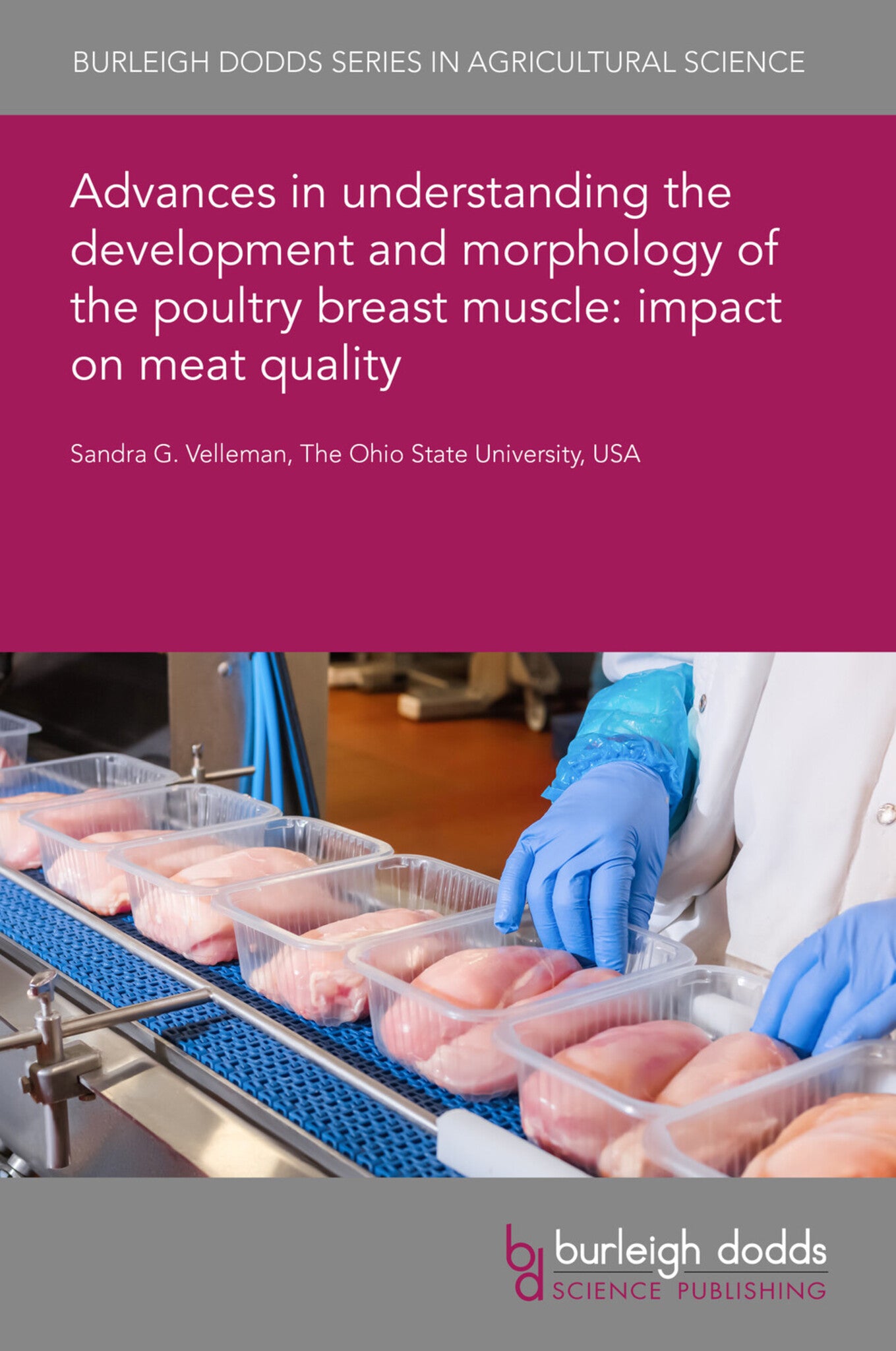We're sorry. An error has occurred
Please cancel or retry.
Advances in understanding the development and morphology of the poultry breast muscle: impact on meat quality

Some error occured while loading the Quick View. Please close the Quick View and try reloading the page.
Couldn't load pickup availability
- Format:
-
05 December 2022


TECHNOLOGY & ENGINEERING / Agriculture / Animal Husbandry, Poultry farming, TECHNOLOGY & ENGINEERING / Agriculture / Sustainable Agriculture, TECHNOLOGY & ENGINEERING / Food Science / Food Safety & Security, Sustainable agriculture, Agricultural science

1 Introduction 2 Types of muscle fiber metabolism 3 Posthatch skeletal muscle growth 4 Heterogeneity of satellite cells 5 Morphological structure of the pectoralis major muscle: role of satellite cells 6 Role of satellite cells and extracellular matrix in breast muscle structure associated with myopathies 7 Satellite cell conversion to an adipogenic lineage 8 Effect of selection for breast muscle yield: fast compared to slower growth 9 Conclusion 10 Future trends in research 11 Where to look for further information 12 References



